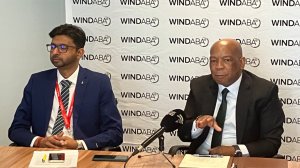Electricity and Energy Minister Dr Kgosientsho Ramokgopa is confident that government will be able to positively intervene on Eskom’s tariff-hike application for the 2025/26 financial year at the National Energy Regulator of South Africa (Nersa).
If granted as it currently stands, electricity costs for direct Eskom customers would increase by 36.15% on April 1 next year, and by 43.55% at municipal level from July 1.
Speaking at Windaba 2024 in Cape Town on Thursday, Ramokgopa said his department had a number in mind that could prove more palatable, but added that he did not want to disclose this figure as he did not want to compromise the integrity of the Nersa process.
“All I’m saying is that 36% is untenable and 20%-plus is untenable.”
Ramokgopa said it was feasible to balance Eskom’s financial demands with the needs of business and the general public.
He said the increases proposed by the State-owned power utility would harm South Africa Inc’s competitiveness, erode disposable income on all social levels, while it would also place poor households in a position where they would have to choose between having a meal, or power.
It would have “huge, huge implications”.
Ramokgopa said it would be possible to lower Eskom’s proposed price hikes through policy interventions such as delaying – not scrapping – Eskom’s carbon tax compliance, set to kick in in 2026.
“On the bottom line it is like R6-billion – by any measure that is significant.”
The rollout of smart meters and prepaid electricity could also significantly bolster Eskom’s balance sheet and efficiency, with the utility’s municipal debt currently sitting at R82-billion.
While this is happening, it would be possible to partially insulate the poor from electricity price hikes through various interventions.
Ramokgopa said National Treasury had an allocation for the number of poor households to be supported by municipalities with free electricity – ten-million – with the number currently only at two-million, as most municipalities do not have the capacity to determine who qualifies for this support, or the mechanism to deliver the electricity to these households.
Prepaid meters would, however, allow for direct subsidisation of these households, without having to go through the municipality.
It was also on the cards to increase the quantum of free electricity allocated to poor households.
Twenty-one years into the free-electricity programme, 50 kWh per household per month was “surely not enough”, noted Ramokgopa.
Increasing this would, however, have a cost implication on the fiscus that would need to be quantified.
“I am confident…that we can provide some degree of relief,” said Ramokgopa.
“But we are not going to soil the Nersa process; Nersa is going to run its process.”
Ramokgopa said he will make a submission to Nersa in his capacity as the Electricity Minister, while he was also in a position to make public announcements on policy changes that could potentially influence Eskom’s application and/or Nersa’s decision process.
Edited by: Creamer Media Reporter
EMAIL THIS ARTICLE SAVE THIS ARTICLE
ARTICLE ENQUIRY
To subscribe email subscriptions@creamermedia.co.za or click here
To advertise email advertising@creamermedia.co.za or click here













